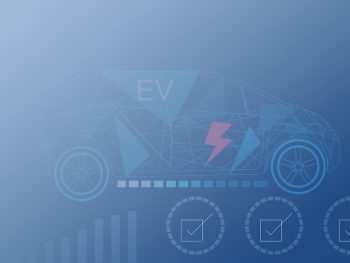New phase for electric vehicles outlined in Gartner predictions
Automakers will continue to wrestle with shifts caused by software and electrification’s increasing roles in 2024, creating a new phase for electric vehicles, according to Gartner.

By 2027, next-gen BEVs will, on average, be cheaper to produce than a comparable ICE, according to Gartner
“New OEM incumbents want to heavily redefine the status quo in automotive,” said Pedro Pacheco, vice president of research at Gartner. “They brought new innovations that simplify production costs such as centralised vehicle architecture or the introduction of gigacastings that help reduce manufacturing cost and assembly time, which legacy automakers had no choice to adopt to survive.”
By 2027, Gartner predicts next-generation battery electric vehicles (BEVs) will, on average, be cheaper to produce than a comparable internal combustion engine (ICE). As OEMs move on to disruptively transform their manufacturing operations in tandem with product design, the coming years will see BEV production costs drop considerably faster than battery costs.
“This means BEVs will reach ICE cost parity much faster than initially expected, but at the same time, it will make some repairs of BEVs considerably costlier,” said Pacheco.
Gartner predicts that by 2027, the average cost of an EV body and battery serious accident repair will increase by 30%. As a result, vehicles suffering a collision may be more prone to a total write-off as the repair could cost more than its residual value. Equally, more expensive crash repairs may lead to more expensive insurance premiums or even the refusal of insurance companies to cover particular car models.
Gartner says the fast reduction of BEV production costs should not be done at the expense of higher repair costs, as it may generate consumer backlash in the long run. New ways to produce a BEV must only be deployed together with processes to ensure low repair costs.
“With the perceived promise of easy gains, many start-ups gathered into the EV space – from automakers to EV charging – and some are still heavily dependent on external funding, leaving them particularly exposed to market challenges,” said Pacheco. “In addition, EV-related incentives are being progressively phased out in different countries, which makes the market more challenging for incumbents.”
Gartner predicts that by 2027, 15% of EV companies founded since the last decade will be acquired or bankrupt.
“This does not mean the EV sector is crumbling. It is simply entering a new phase where companies with the best products and services will win over the remaining,” said Pacheco.
EVs will continue growing market penetration in 2024. Gartner estimates EV shipments will reach 18.4 million units in 2024 and 20.6 million units in 2025.
But it says we are moving from ‘gold rush’ to ‘survival of the fittest’.
Gartner added: “This means the success of companies in this space is now heavily conditioned by their capabilities to respond to the needs of early mainstream EV adopters.”

